#Foliation
Explore tagged Tumblr posts
Text
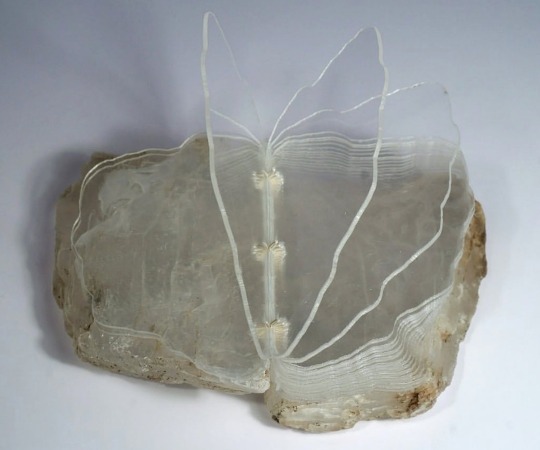
foliation by suze woolf
8K notes
·
View notes
Text



sieved sun
#nature#photography#sweden#nature photography#canon#photographers on tumblr#beauty#beauty of nature#forest#woods#birches#foliage#leaf#leaves#new foliage#new leaves#new leaf#spring foliage#spring leaves#spring leaf#birch leaves#foliation#spring sun#spring in sweden#sunshine#sunlight#sun through trees#sunlight through trees#beautiful#beautiful nature
86 notes
·
View notes
Text
instagram
“Foliation” by Suze Woolf — the term “foliation,” refers both to the way rocks layer and the structure of a book.
The work is crafted from crystalline selenite, laser-cut acrylic sheets, and bound with linen thread using a modified Coptic binding technique. The reflective qualities of selenite tie it to the concept of celestial bodies—its name references Selene, the Greek goddess of the moon 🌙
1 note
·
View note
Text
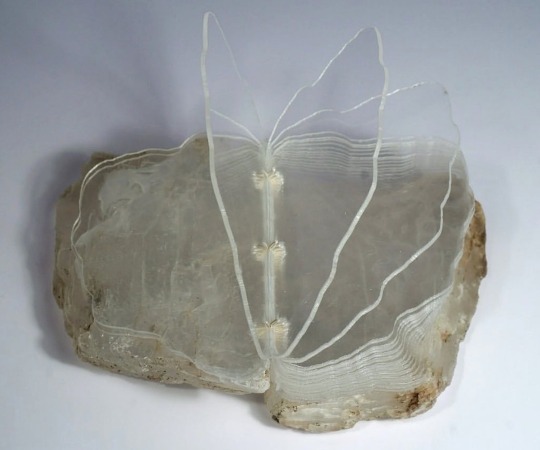
0 notes
Text

John Piper, Foliate Head: Spring (c. 1981)
12 notes
·
View notes
Text
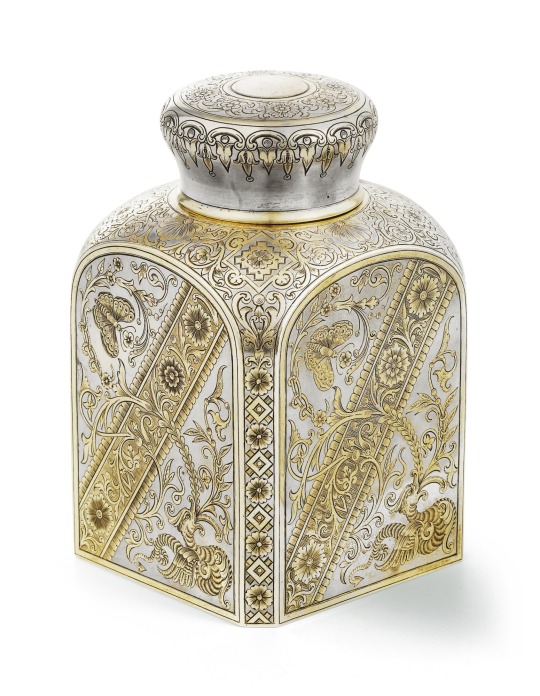
A Russian Silver and Silver-Gilt Tea Caddy,
Pavel Ovchinnikov, Moscow, 1889,
Eight 14cm, 5 1/2 in.
Of square form with curved corners and canted sides, the decorated body depicting stylized fire breathing dragons among foliate scrolls, divided by a diagonal reeded sash, silver mounted cork stopper with ring handle, 84 standard.
#art#design#luxury#overdose#jewellery#jewelry#luxury lifestyle#russia#tea#tea caddy#silver#pavel ovchinnikov#moscow#1889#dragon#scroll#foliate
14 notes
·
View notes
Text
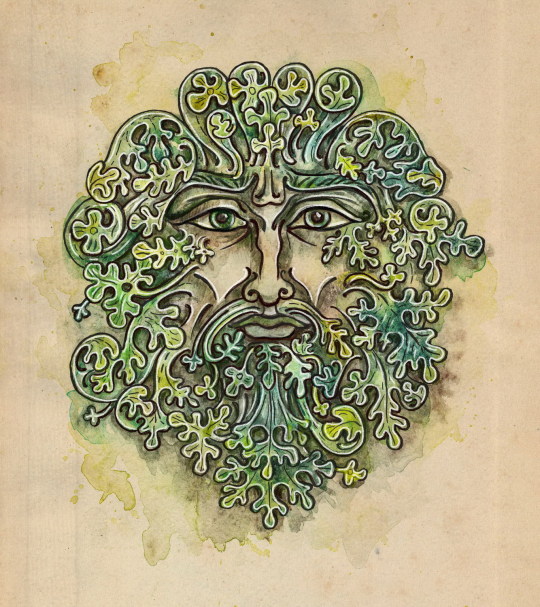
The Green Man, watercolor and color pencils
#Green Man#folklore#foliate head#Gothic art#gothic motif#medieval#medieval art#mythology#fairy#fairytale#historic design#ornament#pagan art#art#illustration#artwork#fantasy art#monsters#fantasy#fantasy creatures#watercolor#watercolor art#artists on tumblr#tumblr art#art on tumblr
28 notes
·
View notes
Text
Today's #FloraFriday is this foliated border on the first folio of Ms. Codex 59. The book is a capitulary containing copies of Venetian statutes pertaining to officials concerned with financial matters, and this page is the most highly decorated.
Online:
#medieval#manuscript#venice#venitian#16th century#renaissance#capitulary#law#history of law#illumination#illustration#foliate border#book history#rare books
50 notes
·
View notes
Text
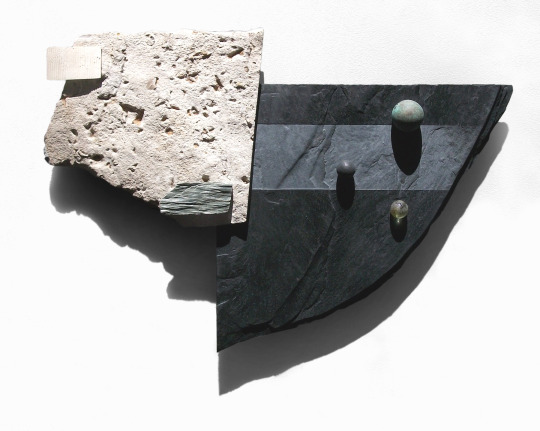
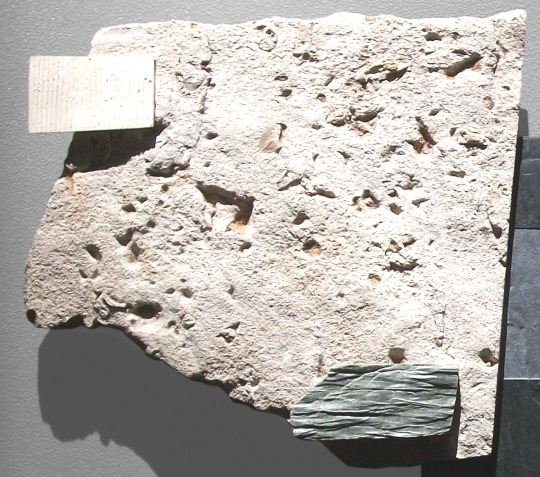

NIVEN'S GARDEN GAME
Virginia slate, fossiliferous Indiana limestone, Georgia foliated serpentine/talc, sandblasted glass, brass, stoneware
10"x 14½"x 1½"
What I imagine the game might be like in the metaphorical interstellar garden of author Larry Niven . . . an homage.
Larry Niven is an American science fiction author whose best-known work is Ringworld, which received Hugo, Locus, Ditmar, and Nebula awards. His work is primarily hard science fiction, using big science concepts and theoretical physics (see Freeman Dyson for the genesis of Ringworld). The creation of thoroughly worked-out alien species as protagonists in his novels is recognized as one of Niven's main strengths.

Larry Niven (American, b.1938 Los Angeles, California)
#sculpture#my artwork#stone#art by me#Don Dougan#Larry Niven#fossiliferous limestone#glass#slate#brass#ceramic#foliated talc
12 notes
·
View notes
Text
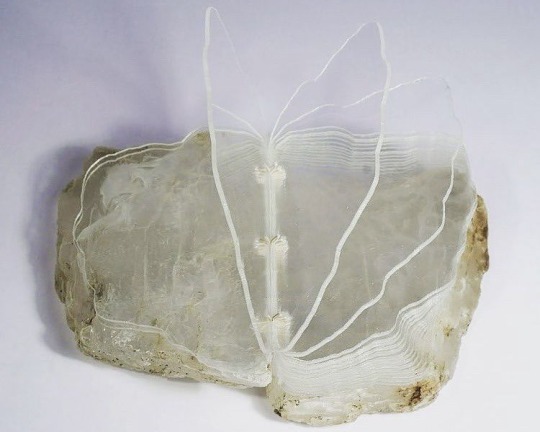

foliation by suze woolf
902 notes
·
View notes
Text
Green spring: The Green Man
THE GREEN MAN
Category: British folklore, European arts and Neopagan customs
The Green Man is a very unique entity. A folkloric being without a folklore, a pagan spirit without a religion, an iconic face that is… literally that. An iconic face. An icon. An image. A motif. A portrait. A face.
In 1939, Lady Raglan (wife of Fitzroy Richard Sommerset, Baron Raglan) published an article in “The Folklore Journal” called “The Green Man in Church Architecture”. In this article, Lady Raglan drew attention towards a phenomenon of English architecture that was called then “the foliate head”, but that she renamed “The Green Man”, and this appellation stuck to this day.
What is a “Green Man”? A Green Man is usually a face (rarely a full body) carved onto a building – well, not just any building, onto the most important buildings of an English city. So, in first place churches and cathedrals, second place the pubs. These faces are also called “foliate masks” because the specificity of a Green Man face is that it is a human face interconnected or “made” with plants elements. A Green Man face ranges from a human face peering out of a thick foliage, to an optical illusion where a carved foliage is shaped like a human face, passing by men faces with leaves instead of hair, beard or mustache. These faces were carved everywhere in medieval and Renaissance Europe, and while most of them are found in England, which seemingly took a strong liking to them, Green Men are found in lesser number in churches and cemeteries of other European countries, such as France or Germany. Architecture and art experts have identified three main types of “foliate heads”. First is the “Foliage Head”, a human head covered in leaves ; second is the “Disgorging Head”, a man head vomiting foliage and branches ; third is the “Bloodsucker Head”, a male face with vines and plants coming out of all of its orifices (ears, nose, mouth…). The presence of the Green Man in Renaissance architecture was put to a stop with the Reformation (those protestants didn’t like things that seemed too pagan), before starting anew in the 19th century with the neo-Gothic and Victorian architectures (and at this point the fashion spread to other countries connected to England, such as the United-States or Australia).
So… The Green Man is an established architectural tradition. A weird face people had the habit to carve in churches and pubs. Alright… But who is the Green Man? That’s the big question. Lady Raglan put forth a bold theory that became massively spread: she wrote that the “Green Man” was the same entity known by the names of “Jack-in-the-Green, Robin Hood, the King of May, the Garland King – the central figure to the European May Day celebrations”. Now, this affirmation has led up to a LOT of debate, and I will talk about the Green Man’s connection to the May Day celebrations later in this post, but Lady Raglan theory held that the Green Man was a pre-Christian deity of life and nature.
And this is pretty much the consensus of everybody. The Green Man used to be a pagan symbol that survived and was reused in a Christianized world. Mind you, there are many Christian theories and interpretations of the Green Man – after all, he appears a lot in Christian structures like cathedrals or cemeteries; and the Green Man was even used to illustrate and ornate Bibles! Some claim it is a symbol of the sins of the flesh consuming the sinner, others will prefer interpreting it as the Holy Spirit breathing life into the world, some even claim it is a visual metaphor of Jesus… But these theories clearly don’t hold much power, especially when you consider how old and widespread the Green Man figure is: the oldest Green Man depictions aren’t actually European, but from the Middle and Far-East. 11th century Green Men in Jerusalem, 8th century Green Man in Rajasthan, and the oldest Green Men ever found were in Lebanon and Iraq, and dated from the 2nd century. This all led to the theory that the “Green Man” maybe originated as a symbol in Asia Minor, before being brought over to Europe – there is also a whole theory in Islamic Sufism of the Green Man being a warped form of the esoteric figure known as Khidr, the Green One, but that’s a whole other talk…
So, the pagan roots of the Green Man cannot be denied. A lot of candidates and theories for the Green Man’s real identity were proposed, some reasonable, some stretched, some really far fetched. Odin, Mimir, Lud, Freyr were all brought to the table, but a clear focus was given to ancient deities of vegetation who were said to have symbolically died and resurrected, such as Osiris or Attis. This is because the Green Man symbol seems to be strongly connected to the topics of life, fertility, growth/regrowth and rebirth. The most reasonable and England-centric theories evoke mostly two direct origins of the Green Man – Celtic and Roman. On the Celtic route, there is always the Cernunnos theory, because some Green Man are depicted with antlers, or with tiny animal faces replacing the leaves covering or being disgorged by the face – which, coupled with the face being that of a mature, often bearded man, all bring back the idea people have of the deity Cernunnos. The other aspect rather has an approach tying the Green Man to the Roman heritage of England, pointing out similar male, leaf-covered deities and figures of nature – Bacchus, Sylvanus, Vertumnus… Especially telling is a “Green Man” of the Romanized England times found carved in the ruins of a villa, but whose vegetation was identified as seaweed and was thought to have represented Neptune, the Roman god of the waters.
Overall, a lot of theories, a lot of discussions, a lot of potential candidates behind this face… And another debated and mysterious topic is the reason this vegetation mask was used in the first place in buildings as religious and sacred as churches out of all things. (The presence of the Green Man in pubs isn’t much problematic – “The Green Man” being a recurring symbol and a typical name of English pubs). One side argues that the Green Man figure was demonized and devilized by the Christians, and probably used in a similar way to the gargoyles in the religious architecture – another grotesque figure supposed to repel evil spirits while frightening people away from badness. The other side rather invokes the full adoption of the pagan figure into the Christian customs, evoking other cases of the old pagan religion becoming part of the culture of Christian Britain (Samhain becoming All Saints/All Souls Day, or the goddess Brigid becoming Saint Brigit). One theory will have you claim that the stonemasons and carpenters secretly kept alive a pagan tradition or believed in an old superstition tied to the Green Man, and secretly carved the head on their most important works in hope of some fertility reward, but given how well-known the Green Man is the “secret” wasn’t apparently well kept, if it existed in the first place. A more reasonable theory rather takes a strong interest in the idea of the Green Man as a symbol tied to death, since in cemeteries and on graves we have a lot of skeletons wrapped in ivy, or with plants sprouting from their eye sockets, making them a more morbid version of the Green Man face – in this theory the idea of a head wrapped or disgorging plants would either be a memento mori about decay (plants growing out of a corpse’s rot) or a hopeful illustrations of rebirth (life formed out of the dead).
So many possibilities, so little answers… But modern consensus generally agrees that the Green Man figure is now a sort of spirit of nature, a personification of vegetation, or the symbol of mankind and nature united in a perfect balance.
-- - - - -
Lady Raglan’s affirmations of how the Green Man is “Jack-in-the-Green, and Robin Hood, and the May King/Garland King of May Day celebrations” should be taken with caution, because Lady Raglan never hid the fact that she was heavily influenced by the famous (or infamous, depending on who you ask) book “The Golden Bough”, one of the first big books about comparative religion and finding the archetypes common in European mythologies – but that is as much renowned for its brand new approach to the topic as it was for setting up a lot of artificial interpretations and fake trends. So yes, caution here. But despite that, Lady Raglan was onto something… The figure of the Green Man seems to have had many different incarnations or “cousins” in English culture – the most commonly invoked being Robin Hood (a man dressed in green, living in the forests with or sometimes within the trees, and who was as much a mascot of pubs as the Green Man) or the British Father Christmas (dressed in green too, and crowned with ivy, yew and holly). Most notorious of these “cultural doubles” is however Jack-in-the-Green, a tradition of May Day celebrations in England where a man wears over their upper body a pyramidal or conical wicker structure covered in leaves and foliage, with only their face peeking out of the leaves (if it is out at all, as many Jack in the Green have their face hidden by the foliage). This character, also called Jack o’ Green, traditionally walks alongside the musicians of May Day celebrations, and was believed by Lady Raglan to be another incarnation of the same pre-Christian deity the Green Man corresponded to. Unfortunately this has been proven wrong, as the Jack o Green tradition is proven to have started out in the 18th century and not have existed before that – but Lady Raglan’s theory became so famous that upon the Jack o Green revival (the tradition had died out by the early 20th century, but starting with the 70s, various revivalist groups and neo-pagans decided to bring back the Jack-in-the-Green in May Day celebrations), the figure often became depicted as identical to the Green Man (for example having actors dressed up as Robin Hood and Maid Marian escort the Jack-in-the-Green, or having other actors play the role of “Bogies”, the Jack o Green’s acolytes, as green-skinned men dressed in clothes of foliage).
Beyond these specific figures, there are records of a tradition of “green man” and “green men” strongly present in England – from the expression “green man” being used to denote savage inhabitants of the wild or the people of the old countryside, to actual “green men”, men dressed in leaves and holding clubs, appearing in festivities and parades – there is a set of interesting articles about the history of the Green Man and its existence in English culture here (https://blogs.loc.gov/folklife/2021/01/introducing-the-green-man/) and here (https://blogs.loc.gov/folklife/2021/02/what-was-the-green-man/). And this tradition also dwells into the literary domain, as another “cousin” of the Green Man is the Green Knight from the famous Arthurian romance “Sir Gawain and the Green Knight” (the Arthurian world was another place where the old paganism coexisted alongside Christianity) – E. K. Chambers wrote several decades before Lady Raglan made her article, about how the literary Green Knight was very likely a manifestation of the “green man of the peasantry, who dies and lives again” (see “The Mediaeval Stage”)…
If we jump into modern times, the Green Man was HEAVILY adopted by neo-pagan movements. Many like to make him the male equivalent of a Gaia/Mother Earth figure, but the most famous neopagan interpretation of the Green Man depicts him as a duo, the Holly King and Oak King, vegetation-entities who are supposedly in a constant battle and who, by killing or replacing each other, causes the seasonal turns of summer and winter. The Holly King is the ruler of the evergreens whose strength peaks at midwinter, while the Oak King is the ruler of the bright and hot season whose strength peaks at midsummer. While the Holly King and Oak King theory was suggested in “The Golden Bough” Lady Raglan used to recreate her own Green Man figure (in it there were talks of a divine king whose death was tied to the growth and renewal of nature, and of a battle between summer and winter tied to May Day customs), the Holly King and Oak King tradition was formed by Robert Graves in his famous (or infamous) book “The White Goddess”, a… let’s say poetic and abstract comparative mythology book recreating an entire artificial pantheon of archetypes based on mostly Celtic and Greek myths. It is in the very same book that the modern idea of the “Triple Goddess” was actually born. And so Robert Graves identified his own Holly and Oak Kings as a set of numerous duos from various legends: Lugh and Balor from Irish myths, Sir Balin and his brother Balan from Arthurian texts, Gwyn ap Nudd and Gwythyr ap Greidwal from the Welsh otherworld, Gawain against the Green Knight, the Welsh hero Lleu Llaw Gyffes and his nemesis Gronw Pebr… and even the Biblical duo of Jesus and John the Baptist.
36 notes
·
View notes
Text
All I need is wait for tomorrow then Tactica will be officially released!
Unfortunately,I didn't got a Steam account or any game console that allows me to play it.The game's also too costly for me.
However,I could still get myself a cup of coffee,sitting in front of computer and watching the playthrough,imagining I'm the one playing it.

Actually,I tried to color boss in a different way but they all ended up looking quite strange so I decided I'll just using grey for him.
Goat,as their original habitat does,they got short temper.And our Leblanc's boss is the best example of it.Before he opened Leblanc,he was a normal government officer.His job allows him to contact with his one and only crush in the world out of proper reasons.And her name was Monochrome Foliate,a researcher at the lab.
Even though he knows she got a daughter that called Cloven Foliate.He did asked Monochrome Foliate about Cloven Foliate's father and what's the accurate thing she was researching for,but she never give answers.Even so,he still fall for her hopelessly as if he was being shoted by Cupid's golden arrow.
He used to think that they'll maybe lived happily together just like a normal family in the rest of his life.Of course,he was totally wrong about that.Life was a box of chocolate,which is fulled with chaos.
One day,Monochrome Foliate told boss to be careful because there maybe something happen on her.At first,he didn't take it seriously.But when he received the message about Monochrome Foliate "suicides" ,he realized that warning was never a joke.
So,he adopted her daughter,resinged his job and opened a caffe — Leblanc.Did his best to hide from the danger that Monochrome died in.
There's no way that he could find out the truth behind her death also her researches,he believes so.However,when he had bring a "delinquent" to this shattered family,he'll never expected that Cloven Foliate will step out from her room to contact with outside world,he'll also never expected that he could finally know who's the one that killed Monochrome Foliate and the distorted desire beneath the shadow of the society.
#my drawings#mlp au#digital art#shin megami tensai persona#persona 5#sakura sojiro#caffe machiato#goat#cloven foliate#monochrome foliate#rainy palace
7 notes
·
View notes
Photo

Green Man, c.1230, Bamberg Cathedral, Germany
31 notes
·
View notes
Text
Disgorging foliate heads as medieval symbols of Christianity
Here's something of a pagan PSA: The Green Man is probably not a pagan symbol or deity.

I probably should have dug into this when that coronation invite was doing the rounds last month, but I reckon now's as good a time as any, as long as it's on my mind.
Don't let the grass horns on that coronation Green Man or decades of modern pop cultural mythology fool you: there's not really anything "pagan" about the Green Man. The idea of the Green Man as a pagan deity or mythological figure has been prevalent in the popular imagination for almost a century now, first proposed by a woman named Lady Ragland in 1939, but while people have made all sorts of connections to various pre-Christian gods, there has never been any evidence of the Green Man as an actual figure of some pre-Christian religion. Instead, the Green Man as we know him was probably actually a figure of medieval Christianity. But even that's only scratching the surface, because even the name "Green Man" itself is just a modern name for a series of faces that appear on medieval churches all over England as well in other parts of Britain and Europe.
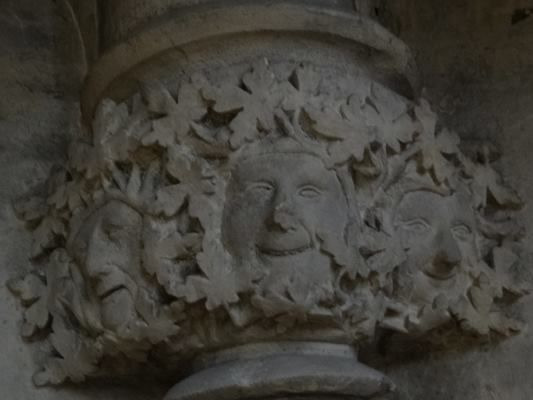
Historian Stephen Miller suggests that the more accurate name for this motif is the "disgorging foliate head motif". It's not as catchy or pleasant as "Green Man", I admit, but several church icons do literally look like that.
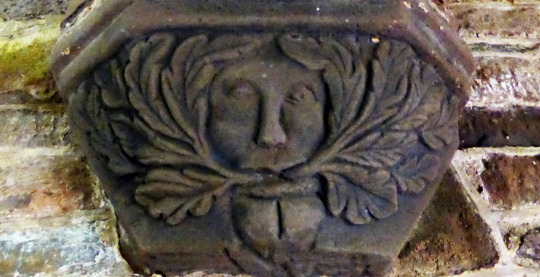
According to Miller, these heads became part of medieval British Christian iconography after having imported by occupying Normans who came from France. So, in a way, you can probably think of the Green Man as a relic of Norman occuption, originally a French motif brought in by the Normans who invaded and colonized England and Wales before eventually becoming part of British iconography.
As to its religious significance, Miller tells us that it represents a motif from the Quest of Seth (or Legend of the Rood), a set of medieval Christian legends about Seth, the third son of Adam and Eve. The basic legend goes that Adam, on his deathbed, sends Seth out to Paradise to find an elixir of immortality. There Seth meets an angel who refuses to give him the elixir, but the angel does instead give Seth a seed (or perhaps more than one seed) from the forbidden tree where Adam and Eve first ate the apple. When Seth returned, Adam had already died, and then Seth planted the seed(s) in Adam's mouth or beneath his tongue, and then buried him in the soil of Golgotha, the place where Jesus was crucified. Then a tree grows from Adam's corpse, which is then cut down and turned into the cross on which Jesus was crucified. In some versions of the legend it's not a tree, but rather a bunch of twigs and shoots, which would explain some of the motifs.
I suppose you can loosely derive the theme of rebirth in some context, but it would not be a pagan context. The "Green Man" was not meant to be understood as a pagan god. Instead, if anything the "Green Man" was probably a medieval representation of Adam, who in the Quest of Seth dies and is reborn into what becomes the cross at Golgotha. So the "rebirth" of the Green Man is a strictly Christian "rebirth": the resurrection of Jesus, which in the Quest of Seth is prefigured by "rebirth" of Adam. That is what Miller refers to as "new life to humankind" - the "new life" promised by Jesus.
So, although the "Green Man" has sort of become a fixture of British popular folk myth and culture, it was originally a Norman icon, a fixture of the Norman occupation of Britain, that also represented medieval legends about Seth and Adam. The disgorging foliate head, which we now call "Green Man", was never really a "pagan" symbol, though it does sort of resemble many similar symbols from various ancient cultures (such as the Kirtimukha in India). The motif we know today and call "Green Man" was probably always a Christian symbol, not a pagan one. I suppose if you want to keep brandishing it, that's your business, but don't refer to it as a pagan symbol or the image of a pagan god, because it just isn't.
#green man#paganism#christianity#medieval literature#british mythology#disgorging foliate heads#medieval legends#the quest of seth
6 notes
·
View notes
Text
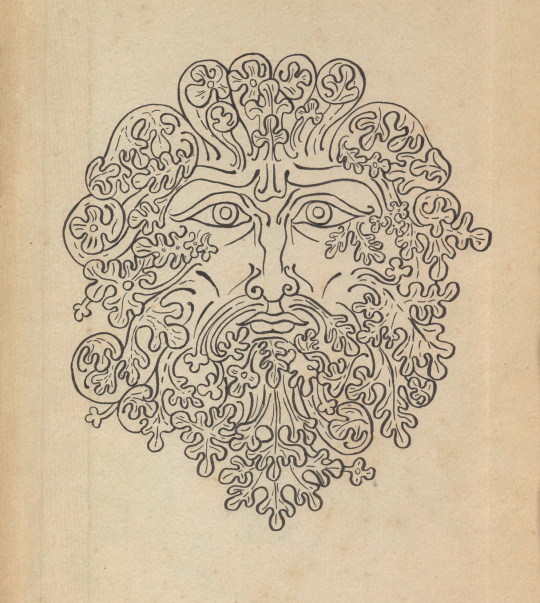
The Green Man, also known as a foliate head
#Green Man#folklore#foliate head#Gothic#Gothic art#Middle Ages#medieval#medieval art#mythology#historic design#ornament#pagan#pagan art#pagan tattoo#art#artists on tumblr#illustration#artwork#Middle age art#fantasy art#monsters#fantasy#beasts
19 notes
·
View notes
